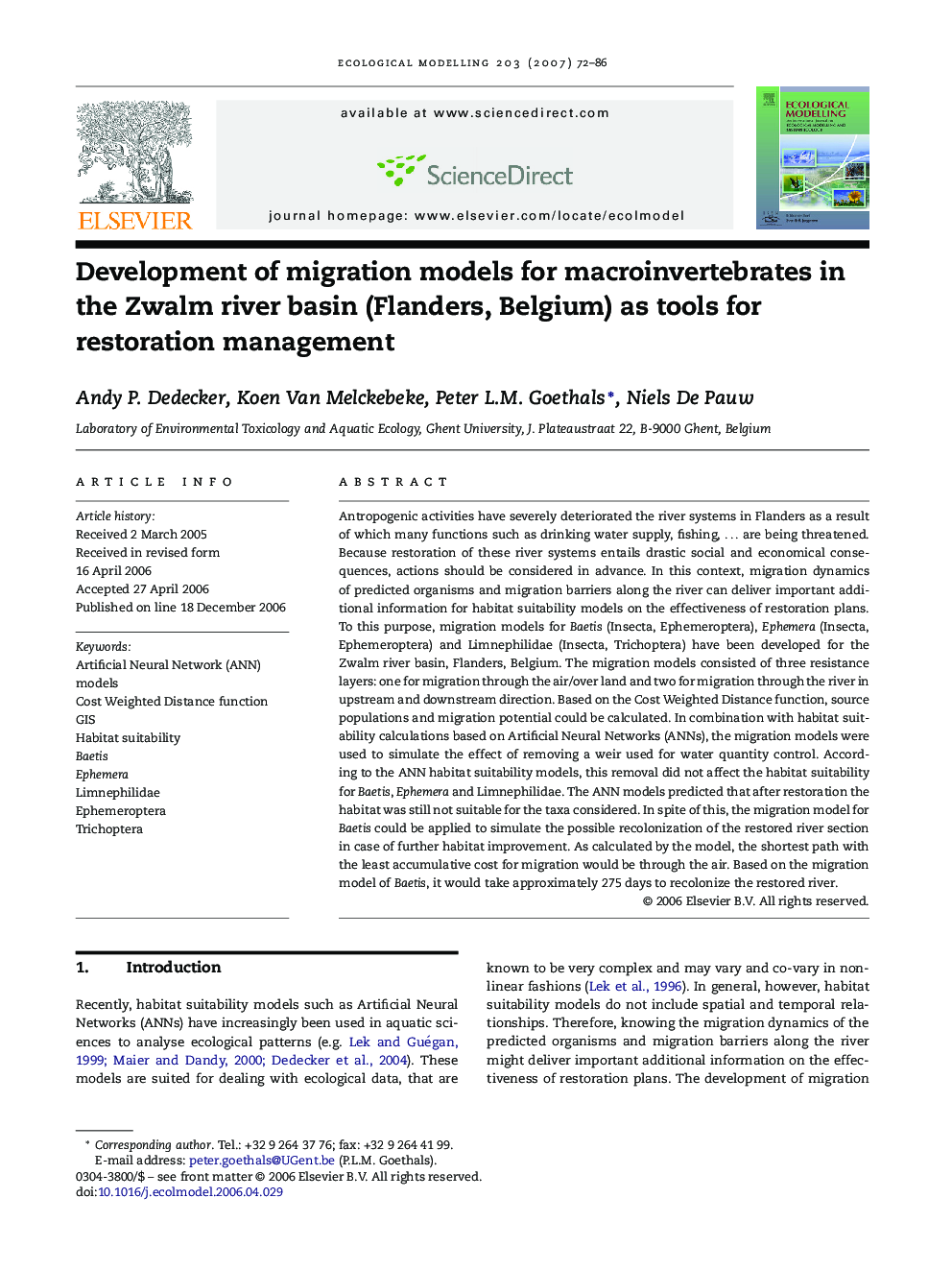| کد مقاله | کد نشریه | سال انتشار | مقاله انگلیسی | نسخه تمام متن |
|---|---|---|---|---|
| 4378695 | 1617551 | 2007 | 15 صفحه PDF | دانلود رایگان |

Antropogenic activities have severely deteriorated the river systems in Flanders as a result of which many functions such as drinking water supply, fishing, … are being threatened. Because restoration of these river systems entails drastic social and economical consequences, actions should be considered in advance. In this context, migration dynamics of predicted organisms and migration barriers along the river can deliver important additional information for habitat suitability models on the effectiveness of restoration plans. To this purpose, migration models for Baetis (Insecta, Ephemeroptera), Ephemera (Insecta, Ephemeroptera) and Limnephilidae (Insecta, Trichoptera) have been developed for the Zwalm river basin, Flanders, Belgium. The migration models consisted of three resistance layers: one for migration through the air/over land and two for migration through the river in upstream and downstream direction. Based on the Cost Weighted Distance function, source populations and migration potential could be calculated. In combination with habitat suitability calculations based on Artificial Neural Networks (ANNs), the migration models were used to simulate the effect of removing a weir used for water quantity control. According to the ANN habitat suitability models, this removal did not affect the habitat suitability for Baetis, Ephemera and Limnephilidae. The ANN models predicted that after restoration the habitat was still not suitable for the taxa considered. In spite of this, the migration model for Baetis could be applied to simulate the possible recolonization of the restored river section in case of further habitat improvement. As calculated by the model, the shortest path with the least accumulative cost for migration would be through the air. Based on the migration model of Baetis, it would take approximately 275 days to recolonize the restored river.
Journal: Ecological Modelling - Volume 203, Issues 1–2, 24 April 2007, Pages 72–86